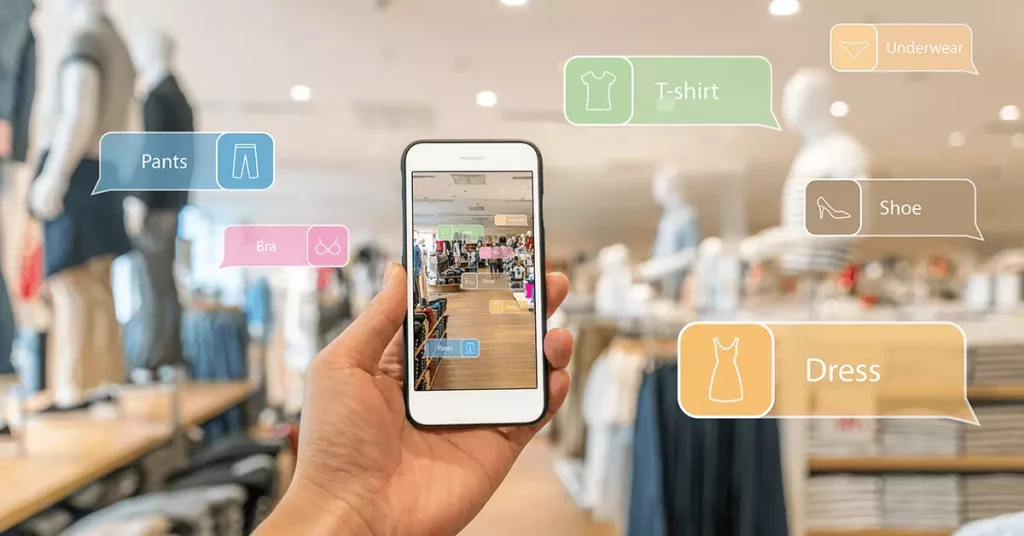
Augmented Reality In E-commerce: How Ar, Vr, and 3D Are Changing Online Shopping – NewGenApps – DeepTech,FinTech,Blockchain, Cloud, Mobile, Analytics
As augmented reality technology offers an immersive experience with 3D visualizations, virtual trials, and product demonstrations, AR offers consumers a unique opportunity to try before they buy. How E-Commerce Businesses Are Using Augmented Reality AR allows e-commerce customers to view products or services in their own environment and time before making a purchase. Augmented reality apps are having a big impact on online and offline sales as they offer shoppers a new retail experience. By incorporating augmented reality into e-commerce, online store owners can offer more engaging and engaging products, resulting in higher conversion rates.
The use of augmented reality in e-commerce offers consumers an immersive experience by allowing them to interact with products in real-time while remaining in their own environment. Augmented reality technology improves the customer experience by allowing them to see it before consumers make a purchase. Augmented reality helps bring e-commerce products to life with insights, enabling customers to make confident buying decisions. The use of augmented reality in e-commerce can significantly reduce the return rate, allowing customers to choose the product that suits their needs.
Today, the value derived from increased purchases depends largely on how well technology can represent the product features that matter most to customers in context. Effectively implemented advanced shopping can help shoppers feel more confident when choosing products, whether through more complete product information or interactions, the ability to customize or customize a unique product design, or through the deeper emotional connection that results from immersive brand storytelling. successful experiences today tend to come from retailers who have highly standardized, highly customizable product sets (Figure 1).
Whether customers are shopping online or in-store, AR technology can help brands reimagine their experiences. VR and AR technologies enable shoppers to gain greater insight into business processes and provide shoppers with new attractions to visit both online and brick-and-mortar stores. As digital real estate becomes the flagship of retailers, from fashion to cosmetics, from eyewear to homeware, many product categories are using immersive technologies such as 3D modeling, augmented reality (AR) and virtual reality (VR) as new ways to interact. with consumers. For retailers looking to innovate, immersive technologies such as 3D, AR and VR offer seemingly limitless potential to connect with customers through unique, memorable and interactive experiences.
Along with its sister virtual reality technologies augmented reality has the potential to change the world of retail, and nearly a third of shoppers believe more investment should be made in these technologies to play a larger role in the shopping experience. With augmented reality (AR) still in high demand by retailers, consumers will never turn down a brand that offers them a seamless shopping experience. People are investing more in the e-commerce and augmented reality market because they believe it will change the entire customer experience. By allowing shoppers to see and test products from the comfort of their homes, augmented reality is helping people shop online with more confidence and is changing the way we think about shopping.
On the web, businesses can use AR to allow customers to virtually inspect and test products before they buy. AR allows shoppers to view a product even if it is out of stock in the store and make a purchase decision. Retailers can use AR to find the best way to organize products based on which products grab the attention of shoppers first. AR can help bridge the gap between shopping in a physical place and shopping online by making it easier to present products and giving the consumer a better understanding of the product they are buying.
In the store, brands can use AR to increase engagement with AR games, improve packaging, or solve other challenges such as overcoming physical space constraints by launching a virtual showroom. Resellers can experiment with various augmented reality applications to provide customers with the best possible experience to promote future products and services. They can also use this technology to offer value packages that encourage shoppers to buy more items. With advances in augmented reality technology, customers can now view realistic 3D representations of products at home or on their body.
Retail giants like Converse and Lego have also started using AR technology to show users what certain products will look like. Home furniture store Wayfair is using similar augmented reality technology in its mobile app, giving shoppers the chance to imagine how an item would actually look in their home. Using Shopify AR, merchants can view 3D models or videos in their online store and create interactive purchases.
Augmented reality offers customers a unique experience with the convenience of touching the screen of their mobile devices or clicking on a web browser to preview products from the comfort of their homes. Using AR, your customers can browse products and are more likely to choose the right product the first time. With augmented reality built into smartphones, mobile devices, web browsers and more, consumers can check the size, color and fit of a product without having to visit offline stores.
Brands such as IKEA, Sephora, Warby Parker, Gucci, ASOS, and Amazon have used augmented reality (AR) to make shopping easier and more fun, but now even small businesses are turning to this relatively new technology to win over customers. Most of the major e-commerce players are acquiring and implementing augmented reality as part of their services such as Alibaba, Amazon, Shopify, Flipkart, and so on. In 2018, Alibaba began working on providing virtual and augmented reality services as part of its customer service in the e-commerce industry.
This content was originally published here.


